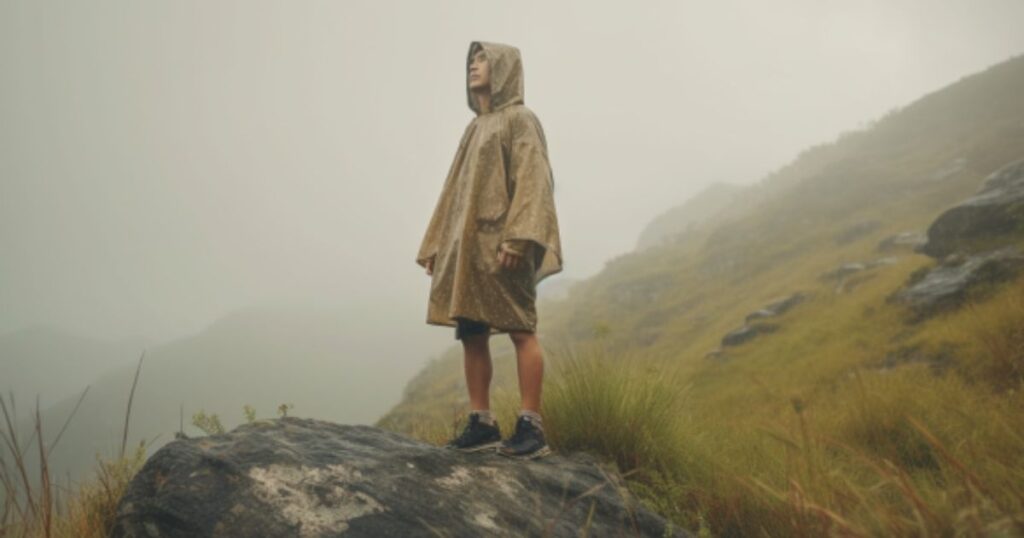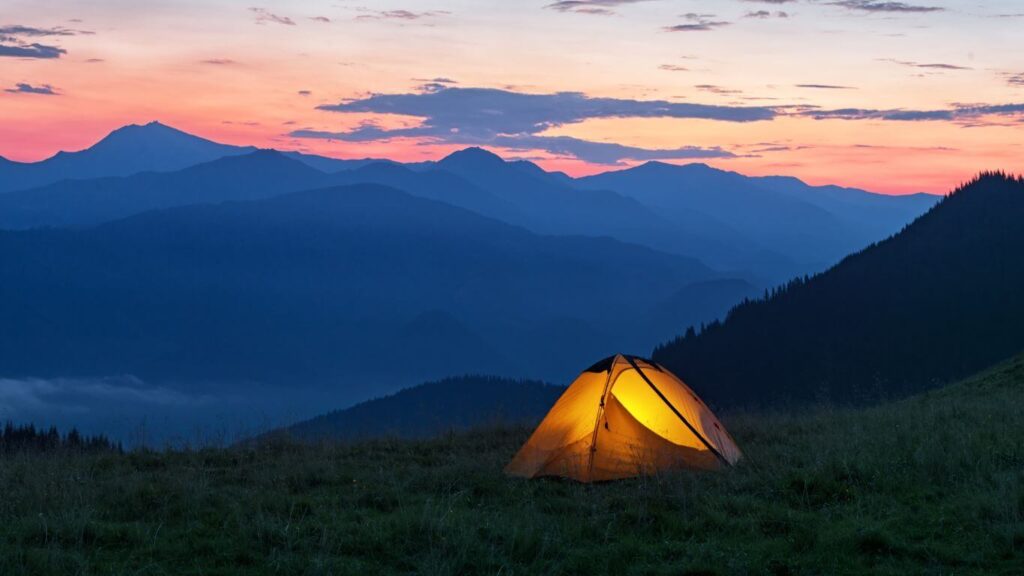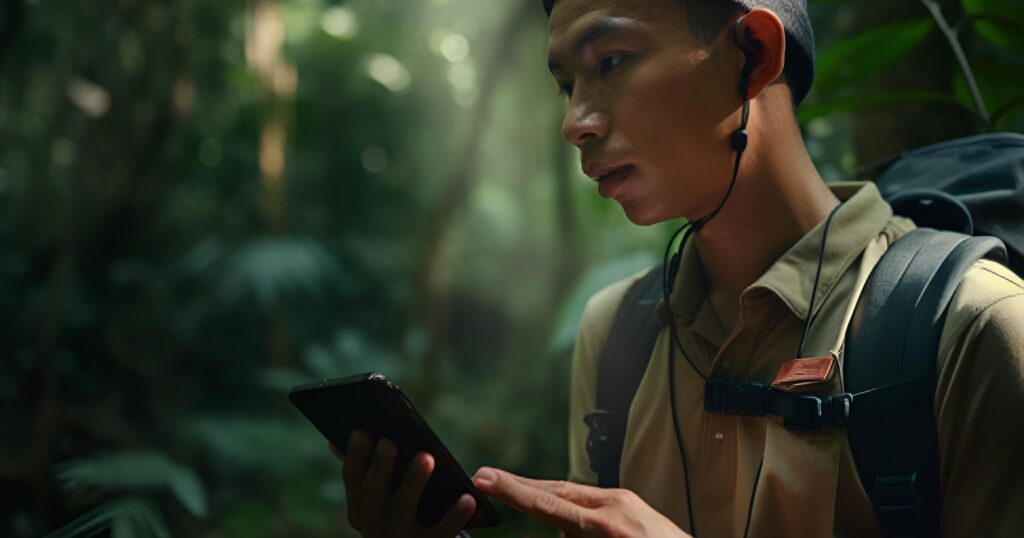Applying sunscreen to your skin may be an effective way to protect the skin from harmful UV rays, but It can be easily removed through sweating or water exposure. It can also be expensive, especially if used frequently, and may not be accessible to everyone.
A GUIDE TO HOT AND HUMID WEATHER CLOTHING
Your clothing is the first line of defense against sharp or rough surfaces in the wilderness, and it can make a significant difference in protecting your skin against the sun's harmful rays.
In hot and humid environments, the sun is often beating down, and the air is thick with moisture. This can lead to feelings of discomfort, exhaustion, and even heat stroke if precautions aren't taken.
In this section, we will explore the best types of clothing and accessories to wear in hot and humid weather while exploring the Philippine wilderness, considering essential factors that will help you navigate the challenging terrain with ease.
1. Loose-Fit Clothing
Loose-fit clothing is an essential factor to consider when dressing for hot and humid weather. Tight-fitting clothes can restrict airflow, making you feel even hotter and more uncomfortable. Loose-fitting clothes, on the other hand, allow air to circulate around your body, helping to keep you cool. They also provide greater flexibility and mobility, making them ideal for activities like hiking and climbing.

Loose-fitting clothes may not be as flattering or fashionable as more form-fitting options.
2. Long Sleeves / Long Pants
Wearing long sleeves and long pants may seem counterintuitive when it comes to hot and humid weather. However, they can actually be beneficial in several ways. Long clothing can protect your skin from the sun's harmful rays, which is especially important in a tropical environment. They can also help prevent insect bites and scratches from rough terrain and plants.

Long sleeves and long pants may not be as comfortable in very hot and humid conditions.
Wearing short sleeves and short pants allow more air flow and reducing sweating. However, it also means that wearing short sleeves and short pants may have some drawbacks when walking through rough terrain or dense vegetation, such as exposing your arms and legs to scratches, cuts, punctures, bites, or sunburn.
3. Lightweight Materials
Another critical factor to consider is the weight of your clothing. Heavy materials like denim and wool can be incredibly uncomfortable in hot and humid weather. Instead, opt for lightweight materials like cotton, linen, or rayon. These materials are breathable and allow air to flow through them, which can help keep you cool and comfortable. However, some lightweight materials may not be as durable as heavier options, which can be problematic for rough terrain.
4. Breathable Materials
Look for clothes made from materials like synthetic fabrics that wick moisture away from your skin. These materials can help keep you cool and dry, which can be particularly important if you are engaging in physical activity.
5. Ventilation Features
Consider clothing with ventilation features like mesh, vents, or strategic cut-outs. These features can help increase airflow and keep you cooler in hot and humid weather. Ventilation is particularly important if you are wearing clothes that are not loose-fitting, as it can help compensate for the lack of airflow.
Tight clothing, such as leggings, can trap heat and prevent air flow, which can make you feel hotter and sweat more. If you prefer wearing tight clothing, you may want to consider choosing options with mesh, vents, or strategic cutouts to increase ventilation and airflow, and lighter colors to prevent heat absorption.
6. Light-Colored Clothing
Wearing light-colored clothing can also be beneficial in hot and humid weather. Light colors reflect sunlight and heat, whereas dark colors absorb it. This means that wearing light-colored clothes can help keep you cooler and more comfortable. Additionally, light-colored clothes are less likely to fade in the sun, which means they will last longer and look better over time.

Light-colored clothing has its drawbacks, such as being susceptible to stains and dirt.
IS IT WRONG TO USE AN UMBRELLA?

Umbrellas are often associated with rainy and wet conditions, but they can also be incredibly useful in hot and humid environments.
By using an umbrella, you can create a personal shaded area that can significantly reduce the impact of the sun's rays and it does not cling to the skin, which can provide better ventilation and prevent discomfort.
Cons of using umbrellas in the wilderness include added weight to your gear, being blown away or becoming a hazard in strong winds, limiting mobility by requiring one hand to hold it, and potentially being caught on vegetation in tighter areas.
HEAD GEAR
The intense sun and humidity can take a toll on your body, especially your head, which is why choosing the right head gear is essential. In this section, we will discuss the different types of head gear that are suitable for hiking in a tropical environment, along with their pros and cons.
1. Wide-Brimmed Hat
A wide-brimmed hat is an excellent choice for hiking in a tropical environment as it provides ample shade to your face and neck, protecting you from the sun's harmful UV rays. It is also comfortable to wear and can be easily adjusted to fit your head.

Wearing a wide-brimmed hat have also potential cons, including extra weight and bulk, interference with a backpack, wind resistance, heat retention, and limitation of peripheral vision.
2. Cap
A cap is a more lightweight and compact option than a wide-brimmed hat. It still provides shade to your face and eyes, and it can be easily packed into your backpack when not in use.

The downside of wearing a cap is that it only protects your face and not your neck, leaving you vulnerable to sunburn.
3. Scarf
A scarf is a versatile piece of head gear that can be worn in different ways to protect your head and neck from the sun. It can be used to cover your head and tied around your neck, providing full protection from the sun's harmful rays.

The downside of wearing a scarf is that it can be hot and uncomfortable to wear, especially if it is made of thick fabric.
FREQUENTLY ASKED QUESTIONS
-
Is sunscreen effective?
-
What's the problem with wearing sunglasses
Sunglasses can be helpful in protecting the eyes from glare and bright sunlight, but they can fall off from your eyes, especially if they don't fit well or if you are engaging in activities that involve a lot of movement.
-
Is it advisable to wear shorts?
The decision to wear shorts depends on a few factors such as the terrain, the length and difficulty of your journey, and personal preference. Please note that if you wear shorts in the wilderness, your legs may be more vulnerable to sharp and rough surfaces.




















